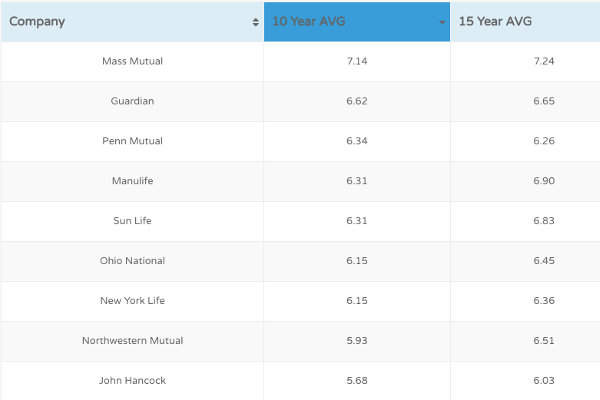Life insurance riders are a way for you to completely customize your insurance policy to fit your needs. In this guide, we will explain them all and more.
Did you know there are many ways to customize your life insurance policy?
With the use of a rider or special endorsement, you can customize your coverage to meet your specific wants and needs.As you shop for life insurance, it's vital to learn more about the many policy riders that are available. You may not take advantage of any of these, but it's good to know your options to ensure that you obtain the perfect coverage.
In addition, not all companies offer all the riders we listed, so it's good to know what are your options.
Here's a list of the most common life insurance riders, all of which you should at least consider when buying a policy:
- Accidental Death Benefit Rider
- Accelerated Death Benefit Rider
- Waiver of Premium Rider
- Disability Income Rider
- Guaranteed Insurability Rider
- Term Insurance Rider
- Children's Term Life Rider
- Renewable Term Rider
- Transfer of Insured Rider
- Return of Premium Rider
- Spousal Rider
- Critical Illness Riders
- Long Term Care Riders
- Paid-Up Additions Rider
1. Accidental Death Benefit Rider
With this, your policy will pay out an additional death benefit if you pass away as the result of an accident.If you have any reason to be concerned about an accidental death - may be because you work in a dangerous industry - it's important to learn more about this rider, including what constitutes an accident.
Be careful in thinking that this rider will give you enough coverage, as most deaths are due to illness, and they wouldn't be covered by this rider.
2. Accelerated Death Benefit Rider
For many people, the biggest problem with life insurance is that they don't get to take advantage of the financial benefits while they're living.With an accelerated death benefit rider, you can use some or all of your policy's death benefit to pay for expenses associated with a chronic or terminal illness.
Almost all of the policies come with an accelerated death benefit rider included in the policy at no additional cost.
3. Waiver of Premium Rider
What would happen if you suffer an injury or illness that keeps you out of work, thus making it impossible to pay your insurance premium?A waiver of premium rider gives you the option to stop paying your premium until you're able to return to your job. All the while, you don't have to concern yourself with your policy being canceled.
Waiver of premium is a very important rider, as it is very affordable compared to the value it provides.
4. Disability Income Rider
If you suffer a disability, as outlined by the terms and conditions of the rider, this puts you in a position to receive a supplementary income benefit.Most people neglect to protect themselves from a disability.
Did you know that 1 in 4 people suffer a disability in their working years?
5. Guaranteed Insurability Rider
It goes without saying that you may not have enough money in your budget to buy as much coverage as you need right now.However, with a guaranteed insurability rider, you have the option to purchase additional coverage at a specified time in the future, such as if you bring a child into the world.
Since you never know if your health situation will change in the future, this rider can give you peace of mind.
This rider is used often with whole life insurance for kids. This way, your kids will never have to worry about getting approved for life insurance.
6. Term Insurance Rider
This is something you can add to a whole life insurance policy. With a term insurance rider, you gain access to a fixed amount of term coverage for a predetermined period of time.The most common periods would be 10 years, 15 years, or a renewable term that goes up in price each year.
7. Children's Term Life Rider
This rider gives you the power to add term life insurance coverage to any child in the future.This is one of the best ways to obtain coverage on your children, all without having to buy an additional policy.
8. Renewable Term Rider
A renewable term rider gives you the opportunity to convert a term life policy to a whole life policy any time before you reach a certain age, such as 65. The renewable term goes up in price each year. However, it is very affordable early in the policy.Note: this rider typically has exceptions, such as not being able to convert to a whole life policy during the first year of coverage.
9. Transfer of Insured Rider
This typically comes into play if you own small business. With this rider, you can transfer a life insurance policy from one employee to the next, thus providing flexibility as your workforce changes.Most whole life insurance policies will come with this rider included.
10. Return of Premium Rider
A return of premium rider is exactly what it sounds like. Although you pay a higher premium every month/year, you have the right to receive all of your money back if you live beyond the term of your policy.This type of rider is much more common with term insurance. Return of premium can vary in each policy, sometimes you can use this rider once a year, and sometimes you need to wait until the end of the policy term.
11. Spousal Rider
Much the same as a children's life rider, you can add your spouse to your policy. This will give your spouse coverage, and you will not need to purchase separate coverage.However, if the original policy terminates or the original insured dies, then the rider goes away.
12. Critical Illness Riders
This rider will pay out a portion of the death benefit if you have a critical illness. Common critical illnesses are:- Many Cancers
- Heart Attacks
- Aneurysms
- Strokes
- Many More
13. Long Term Care Riders
Just like a critical illness rider, a long term care rider will pay out a benefit if you have a long term care need. You qualify for a Long term care benefit if you can perform two of the following activities of daily living:- Eating
- Bathing
- Dressing
- Toileting
- Transferring (walking)
- Continence
We have an article about whole life insurance with long term care.
14. Paid-Up Additions Rider
This rider has different names with different companies, but the purpose remains the same. It's used on whole life insurance policies to increase the cash value of the policy very rapidly.The use of this rider has been extensively studied in books like: If you are looking for whole life insurance with maximum cash value growth, then you need this rider. For more info read this paid-up additions rider article.
We have an article that is a must-read: best whole life insurance for cash value.
Final Thoughts
Just the same as life insurance in general, policy riders are subject to underwriting. With this in mind, the riders you choose will have an impact on your premium.Furthermore, depending on your occupation and any medical conditions, you may not qualify for particular riders.
We recommend that you always select a few riders in almost every scenario:
- Waiver of Premium
- Accelerated Death Benefit Rider
Check out
5 Tips to compare whole life insurance quotes5 Common challenges of buying whole life insurance Get A Personal Quote




